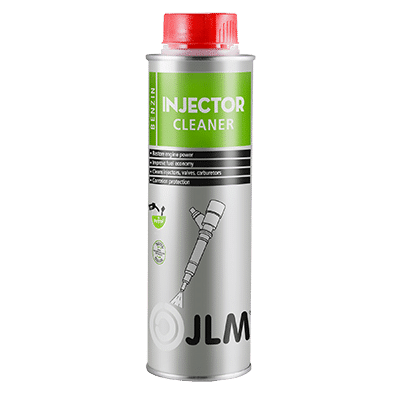JLM Petrol Injector Cleaner cleans the fuel system and intake system on all old and new petrol engines including flex-fuel and E10 engines, improves the power and performance and reduces harmful exhaust gases.
Product information
Since the 90s, all newly manufactured cars with petrol engines have had an injection system. The injection system helps to meet global environmental requirements, to limit fuel consumption and to reduce exhaust gas emissions.
As a car with an injection system or carburettors becomes older, dirt in the form of carbon accumulates in the engine, the intake system and the petrol injectors. The injectors and the intake system become blocked as a result of the fouling and more petrol has to be supplied to the cylinders to maintain sufficient power. The consequences of this are that fuel consumption and emissions increase considerably.
JLM Petrol Injector Cleaner cleans the entire intake system, including the intake valves, combustion chambers and tops of the pistons and cylinders. Fuel System Cleaner Pro ensures an optimally clean fuel system including the injectors and restores the injection pattern.
Petrol Fuel System Cleaner Pro removes the fouling in the intake system and with it the emission of hydrocarbons (HC) and CO2. This check is included in a car’s periodic testing during the MOT test. Many cars with HC emissions that are too high do pass the test after treatment using Petrol Injector Cleaner
JLM Petrol Injector Cleaner contains a small concentration of octane booster. The octane booster improves combustion of the fuel in the engine which increases the power and reduces fuel consumption and the amount of harmful exhaust gases.
HOW TO USE
Add 250ml to one tank of petrol fuel.
For best results use every 5,000 km.
250ml treats 100 litres.
Frequently
asked
questions
These are the most common questions we get.



